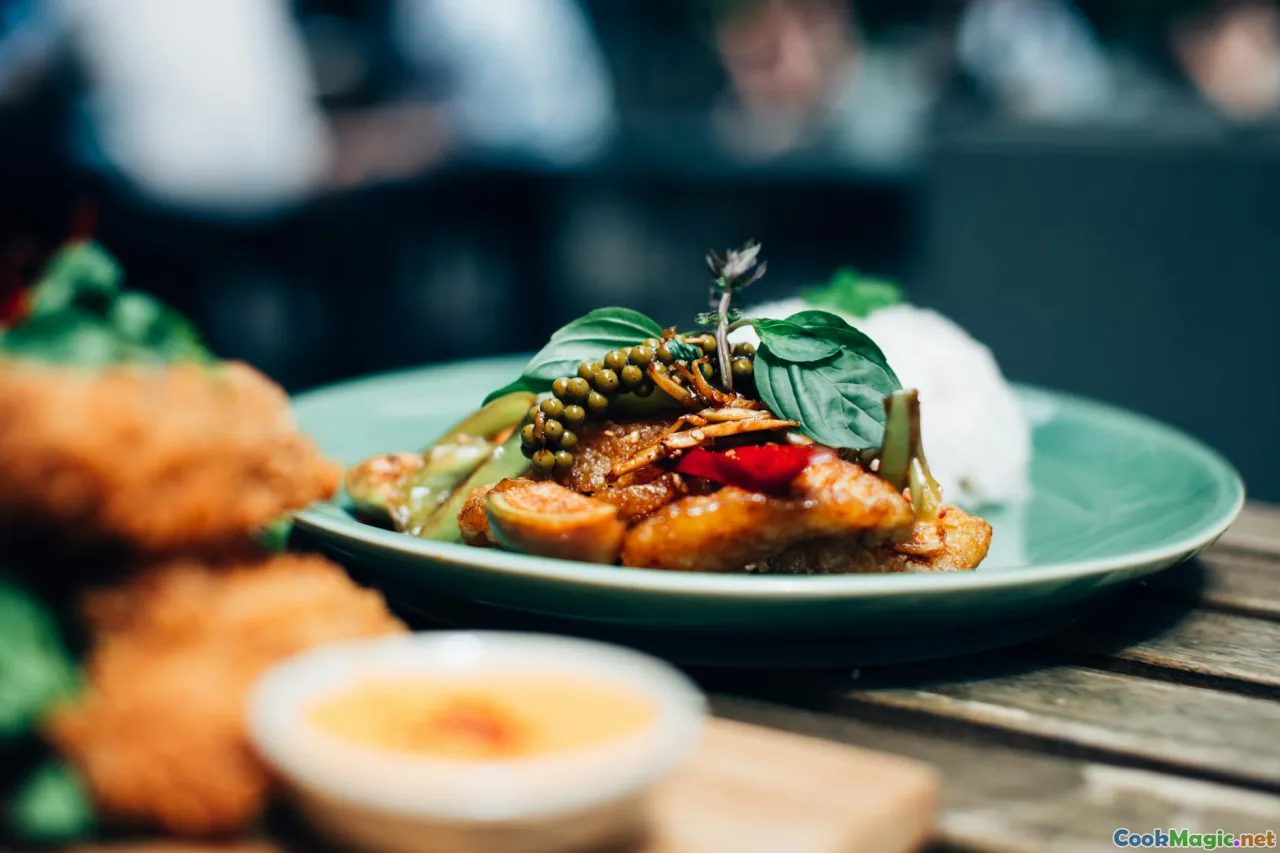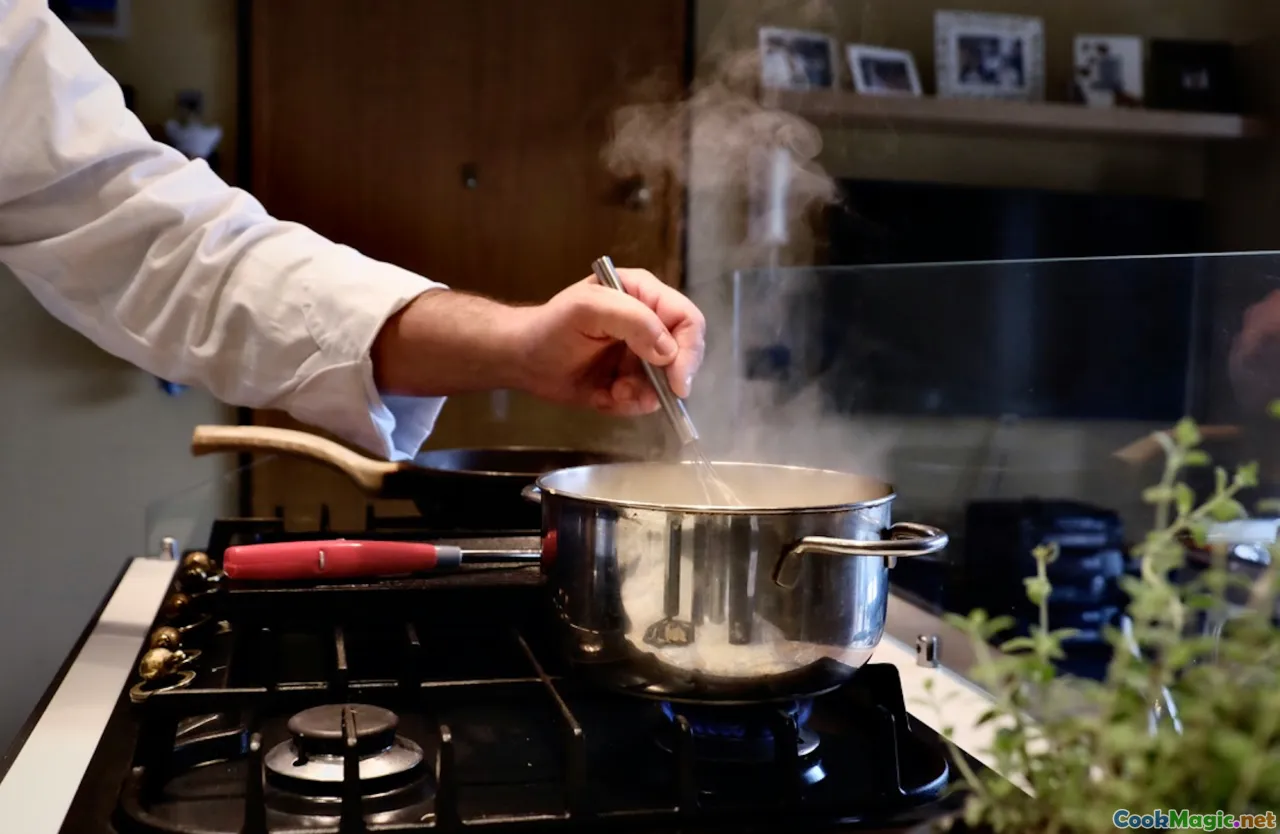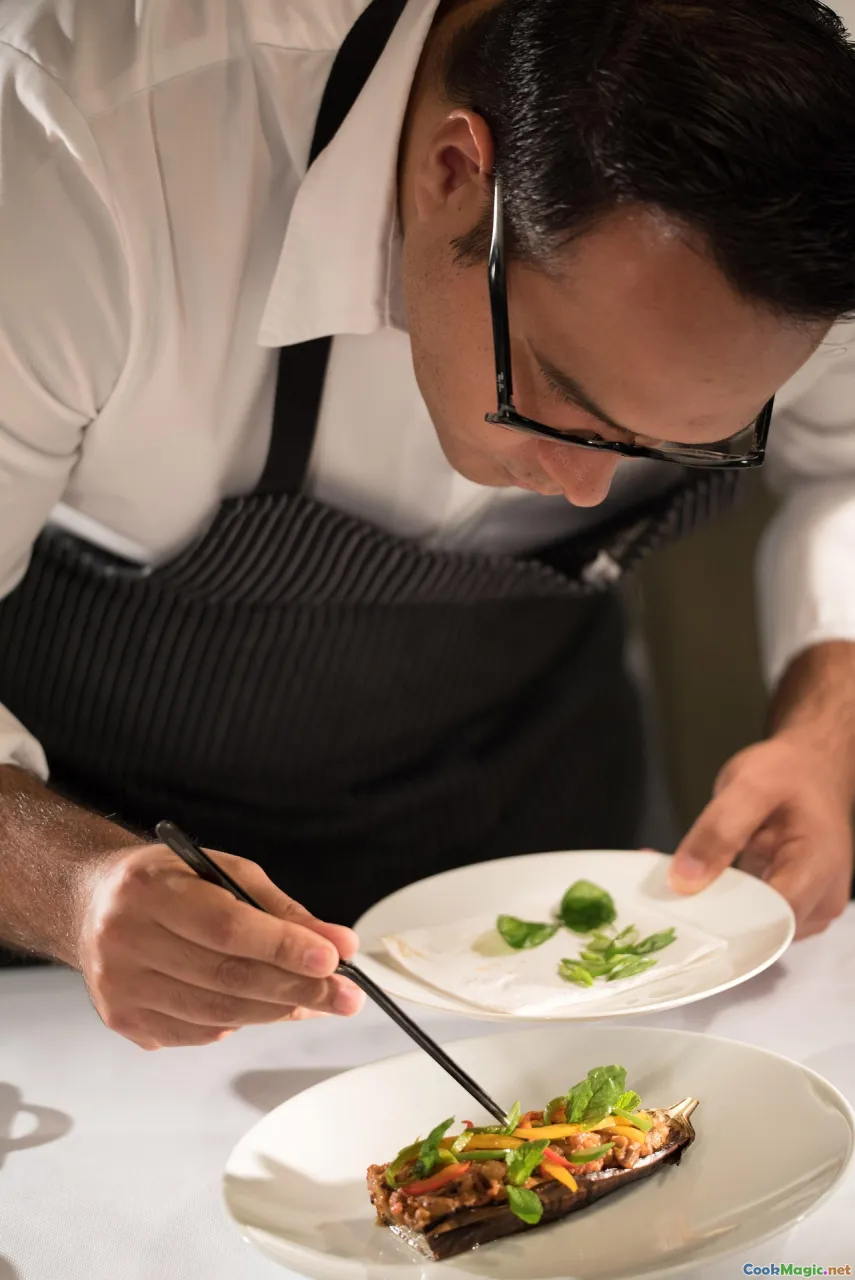Dim Sum Enhanced with Thai Basil Pesto
11 min read Explore a creative fusion of traditional dim sum with vibrant Thai basil pesto, elevating flavors and showcasing culinary innovation. August 15, 2025 03:05
Dim Sum Enhanced with Thai Basil Pesto
There's an undeniable magic that happens when two culinary worlds collide—an alchemical harmony that excites the senses and broadens our understanding of flavor. Imagine the delicate, feather-light folds of traditional Cantonese dim sum merging with the fragrant, herbaceous punch of Thai basil pesto. This unexpected fusion not only celebrates the rich heritage of Asian cuisines but also heralds a new frontier in Pan-Asian culinary innovation.
As a passionate food explorer and storyteller, I’ve always believed that the heart of good cooking lies in experimentation. The humble dim sum, with its history rooted in Chinese teahouses, has long been a symbol of communal joy and culinary artistry. Meanwhile, Thai basil pesto, a modern twist inspired by Italy’s basil pesto but infused with Thai flavors, embodies the vibrant, tropical essence of Southeast Asia. Combining these elements invites diners on a journey—an ode to cultural exchange, personal discovery, and the evolution of traditional dishes.
Let’s step into this flavorful adventure, exploring how to craft dim sum enhanced with Thai basil pesto, understand its roots, and appreciate the sensory symphony it offers.
The Cultural Tapestry of Dim Sum and Thai Basil Pesto

Dim sum’s origins are deeply woven into the social fabric of southern China, especially Cantonese culture. For centuries, small steamed and fried delicacies—buns, dumplings, rice rolls—have been crafted with meticulous skill, served alongside fragrant jasmine tea, fostering community and animated conversation. These morsels—created with precision and reverence—are a testament to the artistry of dumpling makers.
Contrasting this, Thai basil pesto is a modern reinterpretation rooted in Southeast Asia’s love affair with fresh herbs and bold flavors. While pesto originates from Italy, Thai chefs have infused it with kaffir lime zest, garlic, chilies, and a generous handful of Thai basil—a plant whose anise-like aroma and vibrant purple stems evoke tropical gardens.
The marriage of these elements exemplifies Pan-Asian Fusion—resolving culinary boundaries and embracing cultural storytelling through food. It’s a conscious act of reimagining tradition, blending the ancient with the contemporary.
Crafting Thai Basil Pesto: A Flavor-Pilled Secret

Before we integrate Thai basil pesto into our dim sum repertoire, it’s essential to perfect this vibrant condiment. Unlike the classic Italian basil pesto, which relies heavily on pine nuts and Parmesan, our Thai-inspired version aligns with Southeast Asian tastes—spicy, tangy, and aromatic.
Ingredients:
- 1 large bunch of Thai basil leaves (washed and dried)
- 2 cloves garlic
- 1-2 Thai red chilies (adjust depending on heat preference)
- 2 tablespoons roasted fish sauce or nam pla for depth
- 1 tablespoon lime juice
- 1-2 tablespoons toasted rice powder (optional, for nuttiness)
- 1/4 cup vegetable oil (neutral to allow the herbs to shine)
- Salt to taste
Method:
- Prepare the herbs and chilies: Roughly chop the Thai basil and chilies.
- Blend: Using a mortar and pestle (or food processor for convenience), grind garlic and chilies until smooth.
- Add herbs: Incorporate basil gradually, crushing and mixing thoroughly, allowing the oils and aromas to develop.
- Season: Mix in fish sauce, lime juice, and toasted rice powder.
- Emulsify: Slowly add vegetable oil to achieve a pesto-like consistency, bright and fragrant.
This pesto should be intensely green, with a lively aroma of basil, garlic, and chili—ready to elevate your dim sum with its bold, herbaceous punch.
Incorporating Thai Basil Pesto into Dim Sum

While classic dim sum involves fillings of pork, shrimp, or vegetables, the integration of Thai basil pesto introduces a fresh, herby dimension. Here are ways to fuse these elements:
1. Pesto-Infused Dumpling Fillings
Create a crossover dumpling filling:
- Pork and Thai Basil Pesto: Combine ground pork with a spoonful of pesto, chopped water chestnuts, and a splash of soy sauce.
- Wrap in thin wrappers and steam as usual.
- The pesto infuses each bite with aromatic freshness, balancing the savory pork.
2. Pesto as a Dipping Sauce
- Serve steamed or fried dim sum alongside a dish of Thai basil pesto mixed with a touch of soy or rice vinegar.
- This allows diners to dip into the herbaceous sauce, adding complexity to each chew.
3. Pesto Drizzle for Presentation
- After steaming, carefully drizzle the pesto atop the dim sum for visual appeal and flavor infusion.
- Add chopped Thai basil leaves and thinly sliced chilies for garnish.
4. Pesto-Filled Buns and Bubbles
Innovation in Bao:
- Insert a spoonful of Thai basil pesto into soft, fluffy bao before steaming.
- The pesto breaks open as you bite, releasing an explosion of flavor.
The Sensory Experience: Taste, Smell, and Texture

What makes this fusion truly stand out is the sensory journey it offers:
- Visuals: The vibrancy of green pesto against the pale, steamed dumpling wraps creates a stunning contrast.
- Aromas: The fragrant aroma of basil, combined with the savory steamed filling, envelops the senses, inviting anticipation.
- Taste: First a gentle umami hit from the pork or shrimp, then a surprising herbal zing that refreshes the palate, complemented by the gentle heat from chilies.
- Textures: The delicate, silky wrapper gives way to a juicy filling, while the pesto adds an herbaceous, slightly oily richness.
This layered flavor structure exemplifies the beauty of Pan-Asian fusion—a harmony of textures and tastes that surprise and delight at every bite.
Tips for Success and Creative Flare

Successfully melding Thai basil pesto with dim sum involves understanding both ingredients and technique. Here are some insider tips:
- Balance Flavors: Adjust the spice and acidity of the pesto to complement the dim sum’s savory profile, never overpowering.
- Freshness is Key: Use fresh Thai basil and fragrant ingredients for maximum aroma.
- Texture Play: Incorporate crunchy elements like water chestnuts or toasted rice into fillings for contrast.
- Presentation Matters: Use colorful garnishes—microgreens, sliced chili, or edible flowers—to make your dish visually compelling.
- Experiment Boldly: Try different dim sum types—from siu mai to har gow—and different pesto applications.
The Future of Pan-Asian Fusion and Personal Innovation

The culinary landscape is constantly evolving, buzzing with ideas that challenge conventions and celebrate diversity. Combining dim sum with Thai basil pesto embodies this spirit—respecting tradition while boldly pushing boundaries.
In my personal journey as a chef and storyteller, I’ve witnessed how such fusions foster cultural understanding. Sharing a dish that marries Chinese craftsmanship with Southeast Asian vibrancy can inspire conversations, friendships, and a deeper appreciation for global flavors.
Why not take this as an invitation? To experiment in your kitchen, to map your own flavor journeys, and, ultimately, to turn traditional into extraordinary? With a little daring and a splash of Thai basil pesto, your dim sum moments can become unforgettable celebrations of cultural union.
Let each bite be a narrative—rich, multi-layered, and inspiring—and a testament to the limitless possibilities of culinary creativity.









